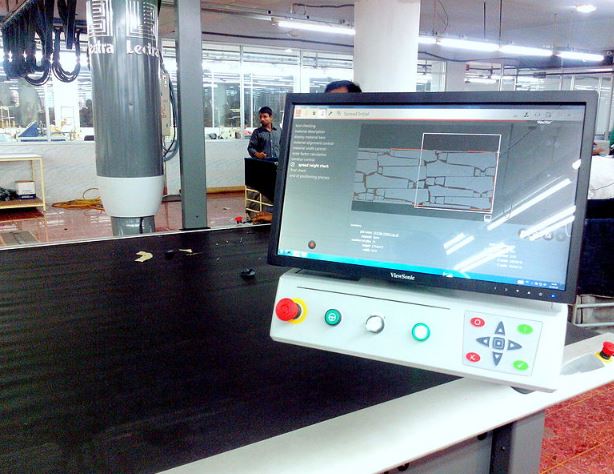Certainly, the materials used in manufacturing industries have always evolved. They shift from one to another, with advancements in technology making it more efficient for manufacturers to produce, and for buyers of these goods to spend their money. Innovations include technologies such as automated cutting machines and digital printing that shape productivity for an entirely new industry. In this article, you can read about how automation and experience strategy will impact productivity in the logistics, manufacturing, and clothing industry tomorrow way ahead.
What is an Automation Solution?
One of the most popular types of automation solutions is called flexographic printing. With flexographic printing, machines print fabrics or objects on large rolls of paper by automatically cutting and folding irregularly shaped pieces of fabric into desired shapes.
The process is very labor-intensive and time-consuming, which is why flexographic printing has been used primarily for high-end and specialty products. However, as AUTOMATION SOLUTION reports, recent advancements in technology have led to the development of automatic cutting solutions that are now being adopted by production-line printers across a wider range of industries. These solutions allow printers to cut fabric using standard templates, which significantly reduces the amount of time and labor required to produce products.
As a result, automatic cutters are now being used to produce a wider range of products, including clothing, home décor items, and even automotive parts. They are also proving to be incredibly beneficial for businesses that rely on a high level of product customization and flexibility. Thanks to automated cutting solutions, businesses can now easily produce products that meet their specific needs without having to resort to expensive custom manufacturing processes.
Types of Automation Solutions
The purpose of this blog is to provide an overview of automation solutions for flexible materials and to highlight the benefits that these solutions provide. There are a variety of different types of automation solutions available for flexible materials, each with its own advantages and disadvantages. This article will discuss three popular automation solutions for flexible materials: machine vision.
Machine Vision Solutions
Machine vision is a popular type of automation solution for flexible materials because it can reduce the time needed to inspect and cut sheets of material by automatically detecting the boundaries between pieces of material. Machine vision systems use cameras to capture images of the material being cut and then use algorithms to identify the boundaries between pieces of material. Because machine vision systems are very powerful, they can identify small details that human inspectors may miss.
One common use for machine vision systems is the automatic cutting of plastic sheets. Plastic sheets can be easily cut using machine vision because they are thin and have few boundaries. In fact, many machines on the market today are specifically designed to cut plastic sheets using machine vision technology.
One potential downside of using machine vision systems for automatic cutting is that they can be relatively difficult to install and maintain. Machine vision systems require special
Flexible Materials
Automatic cutting solutions are improving productivity with flexible materials. These solutions can reduce the time it takes to cut and trim products, as well as reduce the number of cuts that have to be made. This is critical in a manufacturing setting, where precision is key. Additionally, these solutions can improve safety by eliminating potential injuries caused by manual handling of the material.
Applications for Automation Solutions
Flexible materials are often difficult to cut using manual means, which can lead to wastage and decreased productivity. Automatic cutting solutions are providing a more efficient way to handle these materials and improve productivity.
Some of the benefits that automation solutions offer include: improved accuracy and consistency, fewer errors, faster turnaround times, and longer product life. These solutions can also reduce the amount of time needed to cut different types of flexible materials, making them an ideal choice for products that need to be flexible but also durable.
With so many benefits to automatic cutting solutions, it’s no wonder that this technology is being used more and more in the manufacturing process. If you’re looking to improve your workflow and increase your production efficiency, consider investing in a robotic system.
Conclusion
At some point, every business becomes inundated with the ever-growing demand for products. Due to this increase in production, businesses are forced to find new and innovative ways to efficiently produce their products while meeting consumer demands. One such way is through the use of automatic cutting solutions, which allow companies to automatically cut different types of materials using precision machines. Not only does this help save time and resources, but it also improves productivity by freeing employees up to do other tasks.

